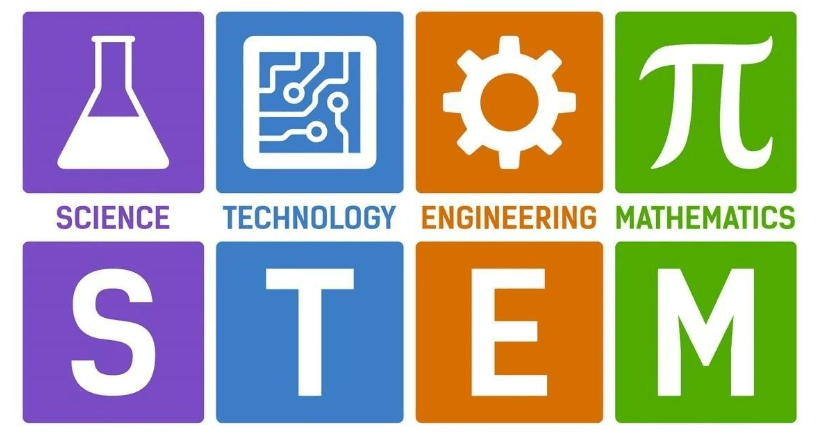A Perspective from David Dodge, CEO and Founder of CodaKid
“The term STEM has become more than just an acronym for Science, Technology, Engineering, and Mathematics. It represents a fundamental shift in how we approach learning, innovation, and our future. As the CEO and founder of CodaKid, an award-winning coding academy for kids and teens, I have witnessed firsthand the transformative power of STEM education and its potential to shape the minds of the next generation.
STEM is not just about imparting knowledge in four distinct subjects. It’s about fostering a mindset that is curious, analytical, and innovative. It encourages students to ask questions, to experiment, and to learn from failure. This approach is crucial in a world where technology is constantly advancing, and the jobs of the future will require a blend of skills that STEM education provides.
One of the key aspects of STEM is its emphasis on problem-solving and critical thinking. In coding classes at CodaKid, students are not just learning how to write code; they are learning how to think like engineers. They tackle real-world problems, learn to debug their own code and develop solutions that are creative and effective. This problem-solving skill is applicable far beyond the computer lab; it’s a life skill that prepares students for any challenge they might face.
Moreover, STEM education is about collaboration. In the real world, complex problems are not solved by individuals working in isolation but by diverse teams bringing together different perspectives and expertise. Through project-based learning and teamwork, students learn to communicate effectively, respect different viewpoints, and leverage each other’s strengths. This collaborative spirit is what drives innovation and is at the heart of what we do at CodaKid.
Additionally, STEM opens doors to understanding the world in ways that were not previously possible. It provides the tools and methodologies to explore the universe, from the microscopic world of quantum physics to the vast expanse of space. By integrating technology and science, we can address global challenges, such as climate change and renewable energy, in more efficient and sustainable ways. One of the most exciting new technologies that we are now exploring with kids and teens is artificial intelligence (AI) and its use as a thought-partner in brainstorming ideas, planning, coding, and ultimately project creation.
However, the importance of STEM goes beyond just technical skills and knowledge. It’s about inspiring a sense of wonder and excitement about the future. It’s about showing students that they have the power to make a difference in the world through their creativity and innovation. At CodaKid, we don’t just teach coding; we aim to inspire the next generation of inventors, entrepreneurs, and leaders who will shape our world.
In conclusion, STEM is more than an educational framework; it’s a pathway to a brighter future. It equips students with the skills, mindset, and confidence to face the challenges of the 21st century and to seize the opportunities that lie ahead. As we continue to advocate for and expand STEM education, we are not just preparing students for jobs that don’t yet exist; we are preparing them to become the architects of their destiny and the creators of a better world.” – David Dodge, CEO and Founder, CodaKid

In an era where innovation and technology increasingly drive our world, understanding STEM is more than just knowing what the acronym represents. It’s about grasping the significance of these fields in shaping our future and the endless opportunities they present. This article delves into the essence of STEM, its importance in modern education, and how it forms the building blocks for the problem solvers, innovators, and leaders of tomorrow. Join us as we uncover the pivotal role of STEM in nurturing curious minds, fostering a passion for discovery, and equipping our youth with the skills to thrive in the rapidly evolving landscape of the 21st century.
Table of Contents
What Does STEM Mean?

STEM, an acronym that has woven its way into the educational fabric with increasing prominence, stands for:
- Science.
- Technology.
- Engineering.
- Mathematics.
This term transcends the mere grouping of these disciplines, embodying a unified approach to teaching and learning that emphasizes the interconnections between these fields. The origin of the STEM acronym can be traced back to the early 2000s, specifically credited to Judith A. Ramaley, the then-assistant director of the education and human resources directorate at the National Science Foundation (NSF). During her tenure, Ramaley coined STEM as part of a broader educational initiative aimed at fostering innovation and technological proficiency among students.
The conception of STEM was not just an exercise in branding. It was a call to action, a response to the growing recognition of the pivotal role these disciplines play in the competitiveness of a nation on the global stage. As industries increasingly leaned into the future, powered by advancements in technology and scientific research, the educational systems faced a pressing need to adapt. Thus, STEM emerged not only as a term but as a movement, advocating for a curriculum that prepares students for the demands of the 21st century, equipping them with the knowledge and skills necessary to navigate and contribute to a rapidly evolving world.
What is STEM? Definition and meaning of the acronym STEM
At its core, STEM represents a groundbreaking approach to education and learning, integrating Science, Technology, Engineering, and Mathematics into a cohesive curriculum. Beyond the simple combination of these disciplines, STEM embodies a philosophy that champions hands-on learning, critical thinking, and real-world application of knowledge. This educational framework is designed to empower students, including children, by exposing them to the interconnected nature of these fields, showing them how scientific principles can be applied to everyday life, how technology advances human capabilities, how engineering solves complex problems, and how mathematics provides the foundation for understanding the world around us.
Incorporating coding into STEM education has become a key element in ensuring that students are not just consumers of technology but creators and innovators. Through coding, students learn logical thinking, problem-solving, and creativity, skills that are indispensable in today’s technology-driven world. The inclusion of coding in STEM programs highlights the importance of digital literacy, preparing students for a future where technology permeates every aspect of life. By embracing STEM, we equip our children with the tools to navigate, contribute to, and succeed in a complex, rapidly changing world.
Why is STEM Important in Children’s Education?

STEM education stands at the forefront of preparing children for a future that is increasingly reliant on technology, science, and analytical thinking. Its importance in children’s education cannot be overstated, as it lays the foundational skills necessary for understanding and interacting with the world in innovative ways. STEM encourages children to explore, ask questions, and solve problems, transforming them from passive learners into active creators. This educational approach is crucial for developing a well-rounded understanding of the world and for nurturing the critical thinking and problem-solving skills that are essential in today’s complex, technology-driven society.
Moreover, the emphasis on STEM from an early age opens doors to a wide range of career opportunities in fields that are poised for growth, including those in science, technology, engineering, and mathematics. Websites like CodaKid offer resources and courses that make learning coding and other STEM subjects engaging and accessible, demonstrating how fun and exciting these subjects can be. The importance of STEM in children’s education lies not just in the knowledge it imparts, but in the way it prepares them for the future, instilling in them a lifelong curiosity and a passion for exploration and innovation.
Recommended reading:
Why is it Better to Start Learning STEM from a Young Age?
Initiating STEM education at a young age harnesses the natural curiosity and adaptability of children, setting a strong foundation for lifelong learning and interest in these crucial fields. Early exposure to STEM disciplines helps children develop comfort and familiarity with concepts that many find challenging later in life. This early start is critical in cultivating not just academic skills but also a mindset geared toward innovation, problem-solving, and creativity. When children engage with STEM subjects from a young age, they learn to see failures as learning opportunities, fostering resilience and a growth mindset that benefits all areas of their lives.

Furthermore, starting STEM education paves the way for improved cognitive development. Engaging with complex problems and learning to code, for example, enhances logical thinking, attention to detail, and abstract thought. Skills developed through early STEM education extend beyond the classroom, preparing children for the digital world they will inhabit. It also helps mitigate any stereotypes or misconceptions about these fields being too challenging or only suited for certain demographics, encouraging inclusivity and diversity in STEM fields from the get-go. In essence, the sooner children begin to explore and understand the STEM world, the better equipped they are to navigate their futures, driven by curiosity and empowered by knowledge.
What Skills Can Be Gained Through STEM Learning
STEM learning is much more than an educational curriculum; it’s a gateway to developing a wide range of skills that are essential in the modern world. Through the integrated approach of Science, Technology, Engineering, and Mathematics, students gain not just knowledge, but a toolkit of valuable life skills. Here’s how STEM shapes learners:
- Critical Thinking and Problem-Solving: STEM education challenges students with real-world problems, requiring them to apply knowledge and reasoning to find solutions. This nurtures an ability to think critically and solve complex issues, a skill highly valued in every aspect of life.
- Creativity and Innovation: While STEM fields may seem strictly analytical, they offer boundless opportunities for creative thinking. Designing experiments, coding programs, and engineering solutions fosters innovative thinking and the ability to approach challenges from unique perspectives.
- Digital Literacy: As technology advances, digital literacy becomes indispensable. STEM learning ensures students are not only comfortable using technology but also understand its workings, preparing them for a future where technology is ubiquitous.
- Collaboration: Many STEM activities require teamwork, encouraging students to communicate, share ideas, and work together towards common goals. This skill is crucial in both academic and professional settings, where collaboration often leads to greater innovation.
- Adaptability: By engaging with constantly evolving fields, students learn to adapt to new technologies and theories. This flexibility is a significant advantage in a rapidly changing world.
- Attention to Detail: Whether it’s in coding a program or conducting a scientific experiment, precision is key in STEM. Students learn the importance of accuracy, a skill that enhances performance in any field.
Through STEM education, students acquire a comprehensive skill set that goes beyond traditional academic boundaries. These capabilities not only make them more adept at navigating the complexities of the modern world but also open up a wide array of opportunities for future careers. STEM is not just about learning; it’s about preparing for a future that is innovative, inclusive, and informed.
How Can STEM Skills Be Greatly Improved?
For children and teens eager to dive deeper into the world of STEM, enhancing skills becomes an adventure filled with exploration, creativity, and discovery. Let’s explore how young learners can supercharge their STEM abilities, blending fun with education.
- Dive into Hands-on Projects: There’s nothing quite like building something with your own hands. Whether it’s a homemade volcano or a computer program, these projects transform abstract concepts into tangible realities, making learning stick.
- Explore Online Courses: Platforms like CodaKid offer a treasure trove of courses that make learning coding and STEM subjects a blast. From designing video games to programming drones, these courses cater to a wide range of interests and skill levels, all from the comfort of home.
- Join STEM Camps: Imagine spending a week or more immersed in learning and fun. CodaKid’s camps offer this experience, allowing kids and teens to explore areas like robotics, game development, and more alongside peers who share their curiosity and passion.
- Take Advantage of Private Lessons: For personalized attention and a learning pace that matches your child’s needs, private lessons can be a game-changer. These sessions provide tailored instruction that can help overcome challenges and accelerate learning.
- Get Involved in Competitions and Clubs: Whether it’s a local coding competition or a school’s robotics club, participating in these activities can sharpen skills and ignite a competitive spirit. Plus, it’s a fantastic way to make friends and learn teamwork.
- Incorporate STEM into Daily Life: Use everyday moments as learning opportunities. Discuss how your smartphone works, or calculate the speed of a rollercoaster. Life is full of teachable moments that can enhance STEM understanding.
- Seek Out Mentorship: Connecting with a mentor or joining a STEM community can open doors to new learning opportunities and guide those who’ve navigated the path before.
- Stay Curious: The world of STEM is ever-evolving. Encourage constant exploration, from attending local science fairs to subscribing to STEM magazines or online forums. Keeping the passion for learning alive is key.
- Reflect and Set Personal Goals: Taking time to reflect on achievements and set new goals keeps motivation high and learning on track. Celebrate every success, no matter how small!
Improving STEM skills is a dynamic process, full of opportunities for growth, creativity, and fun. By exploring courses, engaging in camps, and indulging in hands-on learning, children and teens can not only boost their STEM capabilities but also develop a lifelong love for these essential fields. Let the adventure begin!
Recommended reading: 50 Best STEM Competitions and Events in 2024
What are the Popular STEM Occupations Right Now?
The landscape of STEM occupations is as dynamic as the fields themselves, constantly evolving with technological advancements and societal needs. As we delve into the current trends, it’s clear that certain STEM careers stand out for their demand, innovation, and contribution to shaping our future. Drawing from the latest statistics and labor forecasts in the United States for 2024, we see a diverse range of opportunities that not only promise exciting work but also stability and growth.
Below is a table summarizing some of the most sought-after STEM occupations in the USA for 2024, reflecting the vibrant spectrum of possibilities within these fields:
| Occupation | Median Annual Salary (USD) | Job Outlook (%) | Key Skills Required |
|---|---|---|---|
| Software Developers | 110,000 | 22% | Coding, problem-solving, creativity |
| Data Scientists | 126,000 | 31% | Data analysis, statistical skills, coding |
| Environmental Engineers | 92,000 | 8% | Project management, sustainability |
| Biomedical Engineers | 95,000 | 6% | Biotechnology, research, design |
| Information Security Analysts | 103,000 | 33% | Cybersecurity, critical thinking |
| Civil Engineers | 88,000 | 2% | Design, construction, project management |
| Mechanical Engineers | 90,000 | 4% | Mechanical design, analytical skills |
| Robotics Technicians | 60,000 | 5% | Technical skills, robotics software |
This table reflects a blend of traditional engineering roles with newer, tech-driven positions like data scientists and information security analysts, underscoring the versatility and expansive nature of STEM careers. The job outlook percentage indicates expected growth in each field, pointing to a robust demand for skilled professionals. Salaries vary widely based on experience, location, and specific industry, but overall, STEM occupations offer lucrative opportunities compared to many non-STEM fields.
These careers not only offer financial rewards but also the chance to engage in meaningful work—whether that’s developing innovative software, protecting the environment, or advancing healthcare technology. As we move further into the 21st century, the importance of STEM fields in driving progress and solving global challenges continues to grow, highlighting the critical role these occupations play in our society.
Recommended reading: 5 Things that All Kids Should Study to Get a High Paying Job in the Future
Programming is a Part of the STEM
Coding isn’t just about typing on computers; it’s like having a superpower that lets you solve puzzles, build amazing things, and even make your games. In STEM, programming is the secret ingredient that brings ideas to life. Whether it’s making a robot move, designing a cool app, or creating a video game, coding is all about making your dreams a reality. It’s a tool that helps you explore, discover, and invent new things in the worlds of Science, Technology, Engineering, and Mathematics. So, by learning to program, you’re not just learning to code; you’re learning to think like a scientist, engineer, and inventor all at once!
A Minecraft Adventure in Coding
Let’s take Minecraft, a game you might already love, as an example. At CodaKid, we offer a course where you can learn to code by creating your own Minecraft mods! Imagine being able to modify your Minecraft world with your own rules and designs, making the game even more exciting and personalized. You could create anything from new creatures to awesome gadgets, all by writing code.
This isn’t just fun; it’s a fantastic way to learn programming and STEM skills without even realizing it. You’ll be solving problems, thinking creatively, and applying your math skills to bring your wildest Minecraft ideas to life. It’s like being a director of your own game, where coding is your script, and STEM knowledge helps you make the scenes come alive.

STEM Coding Training for Kids in CodaKid
At CodaKid, we believe in unlocking the full potential of young minds through the power of coding. Our STEM coding training goes beyond teaching kids how to code; it’s designed to imbue them with a holistic set of STEM skills that will serve them throughout their lives. Our courses are crafted to spark curiosity, encourage critical thinking, and foster problem-solving abilities in a fun and engaging way.
From creating their video games to programming drones, children are immersed in a learning experience that makes complex concepts accessible and exciting. Our approach ensures that as they learn to code, they’re also grasping essential principles in science, technology, engineering, and mathematics, making these disciplines more approachable and less intimidating.
Take the First Step Towards the Future
Embarking on this journey with CodaKid not only sets the foundation for a strong understanding of coding but also equips children and teens with the STEM skills crucial for success in the 21st century. Whether your child dreams of becoming a software developer, or an engineer or simply wants to understand how the digital world works, CodaKid is here to turn those dreams into reality.
Don’t wait to give your child the tools they need to build the future. Explore our courses today and discover the exciting world of STEM through coding. Join us at CodaKid, where the future of education is fun, interactive, and boundless.


















